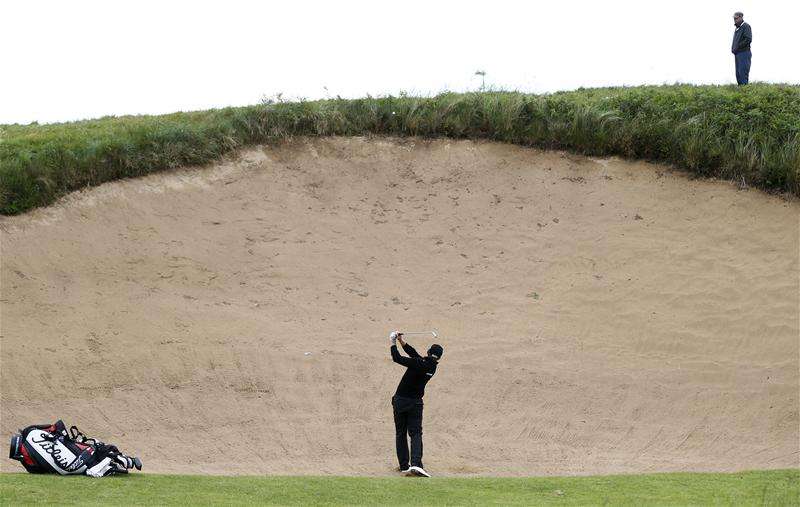In the Golf Paper
Dunluce call is the right one for golf!
So, for only the second time in its long history, the Open Championship is to leave Great Britain. When the game’s oldest and most important event is played at a re-vamped Royal Portrush in 2019, it will represent a welcome return to Northern Ireland after 68 years away and, no doubt, further confuse the many Americans who can’t quite get their heads round the difference between UK and GB.
More importantly, The R&A are to be commended for taking this overdue step, one that has long been mooted ever since the cessation of ‘the troubles’ that so blighted the social and political landscape across the Irish Sea. That the world-renowned Dunluce Links was good enough and challenging enough to host a Major was never really in doubt, albeit the soon-to-be defunct 17th and 18th were neither. That they will be replaced by a brace of Martin Ebert-designed holes drawn from land on the adjacent Valley course was surely the final piece in the Open course jigsaw.
Sadly, there was for long enough more to taking the Open back to Northern Ireland than just the quality of the golf course. And one nagging doubt does remain, namely the fact that the championship is played close to the middle of July, ‘marching season’ in the province. It is to be hoped that, united by their love of golf and the prospect of the huge economic benefits that come with hosting an Open, all members of the community – no matter their church of choice – will come together at what is always a potentially confrontational time of year.
Still, that is enough talk of any possible distractions. Most gratifying in the midst of all the obvious bonhomie on display at this week’s press conference was the thought that the Irish golf fans – maybe the most enthusiastic and dedicated bunch anywhere in the world – will be treated to a close-up view of all the game’s best practitioners. Few who were there will forget the amazing turnout (112,000 spectators over the four days of competition) in less than ideal weather when the Irish Open, won by Ryder Cup hero Jamie Donaldson, returned to Portrush in 2012. If any group of everyday golfers ‘deserves’ an Open it is the peerlessly passionate Irish. In vast numbers, they really are prepared to sit there and watch the grass grow.
“I think they could probably sell the tickets three times over,” confirms 2011 Open champion Darren Clarke, who makes his home in Portrush. “I won’t be surprised if it is the first all-ticket Open. If they don’t sell out on the first day they are on offer I will be massively surprised.”
Key in the sometimes-vexed question of crowd control was how comfortably the course, the town and the surrounding area coped with such huge crowds. In these modern times, how a venue deals with all that comes with a major sporting event is at least as important as the quality of the course itself.
That has never been a problem in Portrush, of course. As its invariably lofty position on almost every ranking list indicates all too clearly, Portrush is, quite simply, one of the best tracks anywhere on the planet. Although not the most impartial observer, Clarke calls it “the best in the world”. That may be stretching credulity a little, but the opinion of a past Open champion – one of the best links players of the last 25 years – is not to be dismissed as merely a symptom of parochial bias.
“Playing well at Portrush, to me, is all about controlling your ball flight,” says Europe’s Ryder Cup skipper. “It’s a completely different challenge to the one we typically face week-to-week on tour. There, all too often, shots are all about where they land. On a links there is another dimension. You have to use the terrain a lot more than you do normally.
“You work the ball off hills. You work the ball of slopes. You run it onto the greens. And maybe the greatest aspect is the variety of shot you are asked to hit. At Portrush I often hit a four-iron from 140-yards, then a few holes later and going in the opposite direction, a wedge from 210 yards. The club and the yardage become almost irrelevant. They are just starting points. You have to first ‘see’ the shot in your mind’s eye, then reproduce it for real. That’s why, if you haven’t got control of your ball flight, links golf isn’t likely to be for you.”
Another fan of Portrush is three-time Open winner, Nick Faldo.
“In today’s game, a lot of youngsters play one way. They hit the same shot over and over, which makes them big cheques. But to make yourself a Major champion you’ve got to have the ability to vary your attack. Especially on a fast-running seaside links like Portrush – that’s what makes the difference.”
As ever when the subject is golf by the seaside, Clarke and Faldo speak much truth. This correspondent’s playing experience of the Dunluce Links is restricted to a British Universities Championship three decades distant, but the impression made by the course has not been diminished by time. Particularly memorable was the aptly-named ‘Calamity’ – the famous par-three where long and left off the tee isn’t great, but is certainly a lot better than short and right.
The par-four fourth – named after the first Ulster-born Open winner, Fred Daly – sticks in the mind too. As do so many other strong two-shot holes. Especially with the addition of some new back tees and the addition of a few bunkers, as well as the aforementioned new holes, Portrush comes armed with a plethora of challenges. The weather will play its part as it always does, but it is difficult to see too many really low scores along the lines of the remarkable 61 shot by a 16-year old Rory McIlroy – “unbelievable” was his understandable post-round reaction – in the 2005 North of Ireland Championship.
*This article was published in TGP on Wednesday October 21






